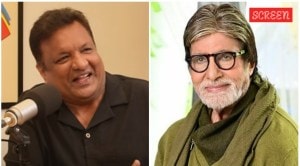General lands today, PM for cross-LoC initiatives in Kashmir
Prime Minister Manmohan Singh’s call today for a mechanism to provide joint security to the Srinagar-Muzaffarabad bus service by India,...

Prime Minister Manmohan Singh’s call today for a mechanism to provide joint security to the Srinagar-Muzaffarabad bus service by India, Pakistan and local authorities signals a radical departure in the sub-continent’s divisive debate on Jammu and Kashmir.
At a time when the divergence between traditional Indian and Pakistani negotiating positions on J&K appears so wide, Manmohan Singh’s new emphasis on building political and security mechanisms across the Line of Control (LoC) could turn out to be a major political innovation.
Addressing the conference of Chief Ministers on internal security here, Manmohan Singh proposed that the governments in New Delhi and Islamabad, as well as local governments in Srinagar and Muzaffarabad, take ‘‘joint responsibility’’ to ensure the security of the first cross-LoC bus service.
The creation of cross-LoC institutions could help shift the traditional Indo-Pak focus away from territorial adjustments in Kashmir to creating new political facts on the ground.
Changed ground realities, in turn, could help create the environment for considering creative solutions to the question of J&K. That Pakistan President Pervez Musharraf might not be entirely averse to this new approach is revealed in his comments to an Indian TV channel tonight.
‘‘A status for Kashmir must be agreed upon… in which Pakistan, India and the Kashmiris, all have a role,’’ Musharraf told Star News. He added, ‘‘legal experts could be brought in’’ to determine the status.
Observing that India was a larger country, he said ‘‘thus magnanimity must be shown by it’’. ‘‘When a smaller nation shows magnanimity, it is seen as a sign of backtracking or buckling under pressure. However, for a larger nation’s magnanimity, it is seen as large heartedness.’’
That the back channel between New Delhi and Islamabad has been active is now widely known. But few in the government are willing to confirm that the idea of creating cross-LoC institutions has already been discussed by representatives of the two sides.
Beyond providing security to the Srinagar-Muzaffarabad bus service, cross-LoC mechanisms in J&K could be extended to tourism, local trade, environmental management, harnessing of water resources, and education.
The Prime Minister’s initiative on joint cross-LoC institutions between India, Pakistan and the local governments of the divided state of J&K comes at a time, when New Delhi and Islamabad are heading towards an impasse in their negotiations on Kashmir.
Manmohan Singh and his senior ministers have repeatedly affirmed that India will not consider any solution to the Kashmir question that involves territorial adjustments and a second Partition of the sub-continent.
Musharraf, on the other hand, has underlined that the Line of Control in Kashmir is part of the problem and not the solution.
It does not take a rocket scientist to figure out that amidst these stated positions, the Indo-Pak dialogue on J&K will go nowhere. It is in this context that Manmohan Singh’s emphasis on cross-LoC mechanisms on Kashmir acquires great significance.
The development of wide-ranging cross-border institutions for cooperation between divided parts of Jammu and Kashmir could create an entirely new basis for discussion on the issue between New Delhi and Islamabad.
It provides an opportunity for India and Pakistan to skirt the question of territoriality, develop a political stake for both India and Pakistan beyond their present control over parts of Kashmir, and rapidly soften the Line of Control and International Border that separate the people of Jammu and Kashmir.
As part of the shifting focus from territory to people, India and Pakistan could also consider not only substantive autonomy for J&K within their respective control, but also further devolution of powers to the sub-regions within the state.
Manmohan Singh’s big new idea on Kashmir is focused on changing the nature of the dividing line in Kashmir rather than on redrawing it. If Musharraf is willing to play ball, this long weekend could turn out to be an unusually productive and memorable one in sub-continent’s turbulent political history.
Photos



- 01
- 02
- 03
- 04
- 05




























